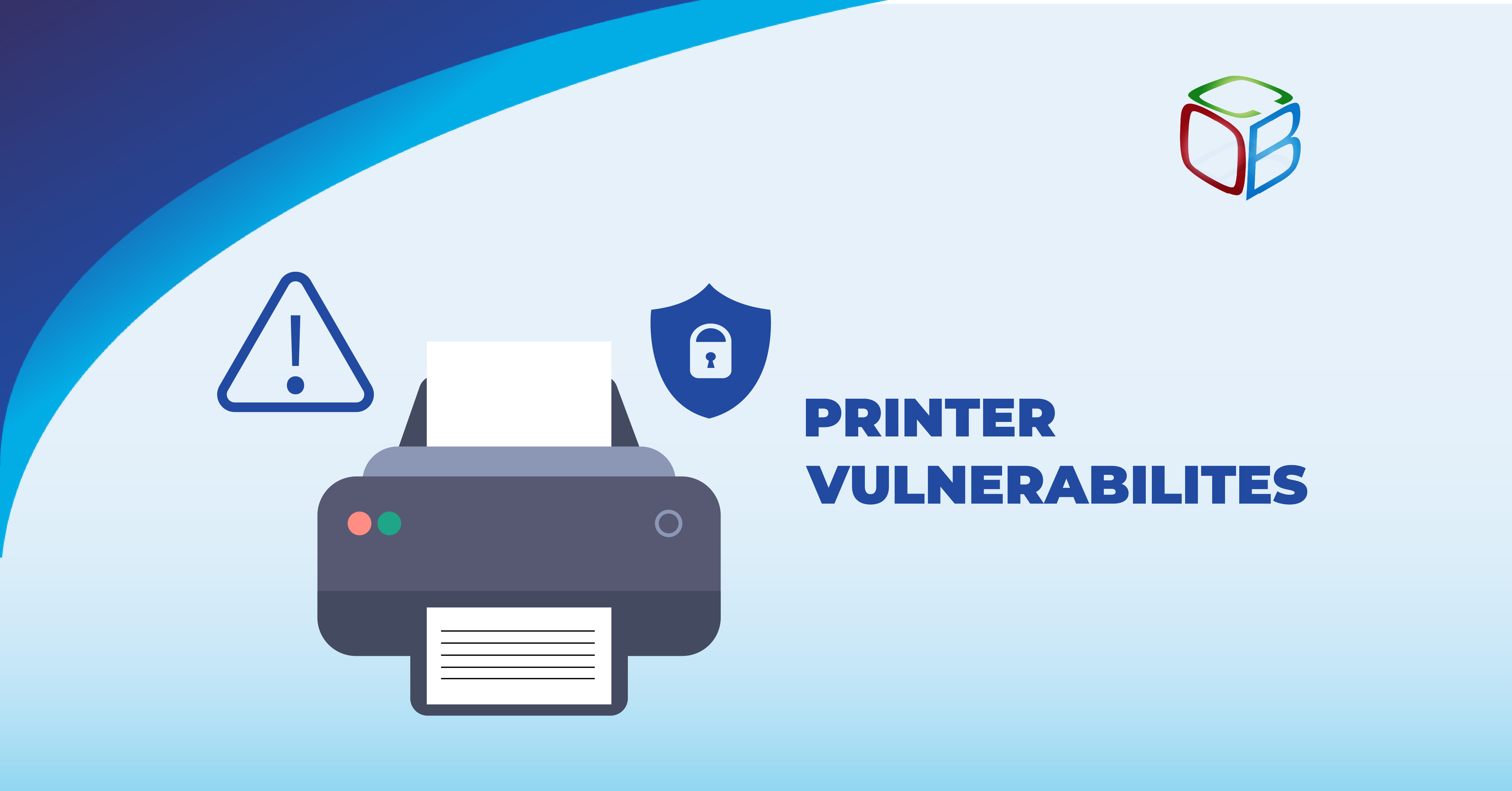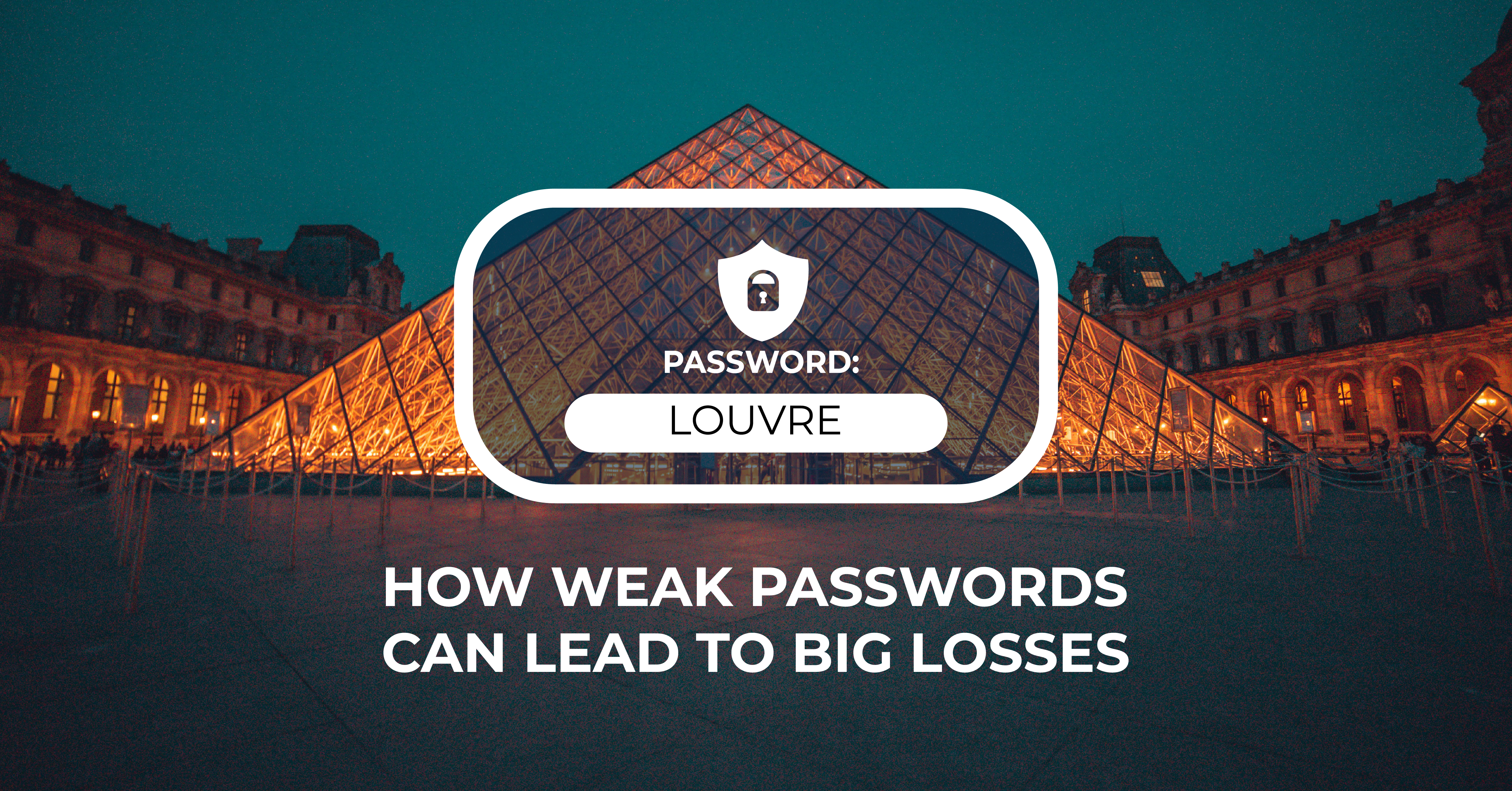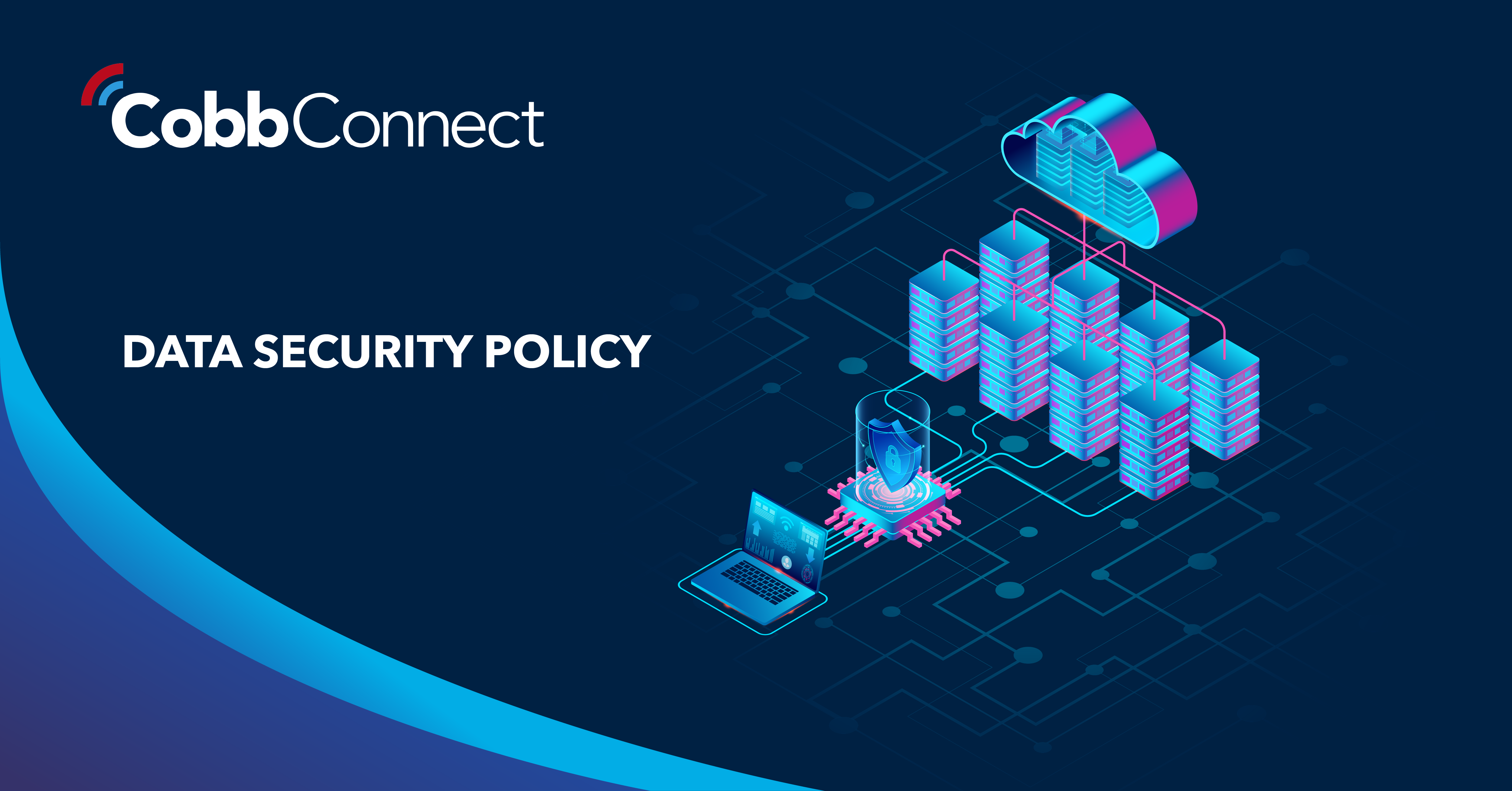2 min read
We “LOUVRE” Strong Passwords: How a Weak Password Can Lead to Big Losses
The Louvre’s password became the punchline of a global story after a heist revealed major security concerns for the museum. Reports say the password...

Multifunction printers (MFPs) have become an indispensable part of modern office infrastructure. As these devices have evolved into sophisticated, network-connected machines, they’ve taken on more responsibility and more risk. HP reports that, “Over 50% of IT breach incidents now involve printers, - only 22% of North American IT pros even view printers as a security risk” (1).
Like any device, printers are vulnerable to the same types of attacks that impact desktops, servers, and mobile devices. If left unprotected, printers can expose sensitive business data and serve as a gateway into your entire network.
Below, we examine some of the most common printer vulnerabilities and provide best practices for securing your print environment.
Default Passwords
One of the most common and avoidable vulnerabilities is the continued use of factory-set or default passwords. When MFPs are deployed right out of the box, many businesses fail to change these preloaded credentials, assuming the devices are secure because they’re operating behind a firewall or on a private network. Unfortunately, these credentials are often publicly documented or easily guessed, giving cybercriminals a clear path to access printer settings, print queues, stored data, and even deeper network functions. This can lead to serious breaches, especially when MFPs are tied to other systems like file servers or cloud storage.
Best Practices:
Start by immediately updating any default usernames and passwords on your devices to strong, unique credentials. Passwords should follow best practices: a mix of upper and lowercase letters, numbers, and special characters, and they should be updated regularly. Ideally, once per month. For additional protection, implement two-factor authentication (2FA) wherever possible. Tools like DUO and Google Authenticator provide a second layer of defense, helping to prevent unauthorized access even if a password is compromised. Enforcing password policies across your organization will also help keep credentials current and consistent.
Unsecured Network Connections
Despite advances in printer technology, many organizations still overlook how these devices communicate with the broader network. “67% of organizations reported data loss due to unsecured printing in the past year.” (2) MFPs function as endpoints, receiving, processing, storing, and transmitting data. This level of access, while convenient, makes them vulnerable to a wide range of cyber threats if not properly configured. If a printer is connected to the network without adequate encryption or access controls, hackers can intercept print jobs, gain access to stored documents on hard drives, or use the device as a launching point for malware attacks. Even internal threats, such as unsecured guest access or improperly segmented networks, can lead to compromised data.
Best Practices:
Ensure your MFPs are connected to your network using secure, encrypted protocols, such as WPA2 or WPA3 for wireless connections. Avoid using open or unprotected networks. Next, implement firewall rules to restrict traffic to and from the printer, ensuring that only authorized users and devices can communicate with it. Additionally, equip your devices with endpoint protection and response (or EDR), like Huntress, an EDR software, which can detect and block malware that enters through infected print jobs or malicious websites. For optimal protection, separate your printer network from your main business systems, and monitor network traffic for suspicious behavior or unauthorized access attempts.
Outdated Firmware
Firmware is the core software that runs your MFP, controlling how it interacts with users, systems, and the network. However, many businesses operate printers with outdated firmware, unaware that each missed update leaves the device vulnerable to newly discovered threats. Attackers actively scan networks for printers with known firmware flaws, and once they gain access, they can disable device functions, hijack data, or move laterally into the broader IT environment. Delaying firmware updates not only increases security risks but can also lead to performance degradation and compatibility issues with other systems.
Best Practices:
Establish a routine for checking and installing firmware updates across all devices. Ideally, once a month, though, most manufacturers provide notifications when new firmware becomes available. You can also sign up for alerts through your vendor’s support portal. For larger environments, consider enabling automated firmware updates to eliminate manual oversight. Some advanced devices, like the Canon imageCLASS M-Series, include firmware attack prevention, which actively scans for unauthorized firmware changes and restores the device’s original configuration if tampering is detected. Keeping your firmware current ensures your printers are equipped with the latest security patches and operating at peak performance.
Unsecured Print Jobs
A frequently overlooked risk occurs not within the device or network, but at the printer tray. In high-traffic office environments, it’s common for print jobs containing sensitive or confidential information to be sent, printed, and left unattended. Documents may include everything from HR records to financial reports, and if left unsecured, anyone nearby can pick them up, intentionally or not. This “paper left behind” issue creates significant compliance and privacy concerns, particularly in industries like healthcare, legal, and finance.
Best Practices:
Enable secure print release across all user accounts. This requires users to authenticate at the device—using a PIN code, employee badge, or biometric ID before the document is printed. This ensures documents are only released when the authorized user is physically present. You can also implement encryption for print jobs in transit, especially when printing over Wi-Fi or from remote locations. For enhanced convenience and security, consider mobile print solutions like Konica Minolta’s Shield Guard, which allows users to centralize security settings and securely release print jobs, as well as lock them from their smartphones or tablets.
Remote Access
With the rise of remote and hybrid work, the ability to access printers from outside the office has become a valuable convenience. However, improperly secured remote access can turn that convenience into a vulnerability. Unsecured web interfaces, exposed IP addresses, or weak authentication methods can provide a backdoor for attackers to access your print environment and, by extension, your internal systems. In many cases, remote access tools lack the proper security configurations, and without oversight, businesses may be unaware of how much access they’ve inadvertently exposed.
Best Practices:
Always use VPNs (Virtual Private Networks) or SSL-encrypted connections for remote access to printers. These create secure tunnels that protect data as it travels between the user and the device. Additionally, implementing Remote Device Management platforms, like UniFlow, PaperCut, allows you and your IT team to monitor, configure, and control your entire fleet of devices from a centralized dashboard. Konica Minolta Bizhub’s SECURE Service offers tools that make it easier to apply consistent security policies, detect unauthorized changes, and automatically reset device settings to match your approved configuration standards.
Secure Your Printers
Printers are no longer simple output devices. They’re fully integrated, data-driven systems that interact with your network and store sensitive business information. When left unsecured, they can become the weakest link in your IT infrastructure. Cybercriminals are aware of this and often scan for vulnerabilities in MFPs precisely because they’re often under-protected.
At Cobb Technologies, our Managed & Automated Print Services program, powered by HP, is where you can get enterprise-grade print security, automated supply replenishment, and hands-free firmware updates. This service is all backed by trusted HP technology and supported by Cobb's local team.
Protecting your data doesn't just stop at securing our printers. Make sure your entire network is defended by signing up for our free network assessment here. Managed IT services, Cobb Connect, you and your team can rely on our experts and IT systems to make your business run smoothly and more securely.
Let us help you feel confident in your IT & print environment.
Works Cited:

2 min read
The Louvre’s password became the punchline of a global story after a heist revealed major security concerns for the museum. Reports say the password...

6 min read
Organizations of all sizes handle enormous volumes of data. Data is one of the most valuable assets of any organization.Unfortunately, it’s also a...

5 min read
In today’s digital-first workplace, your network is more than just a connection point; it’s the foundation of your operations. Whether your...